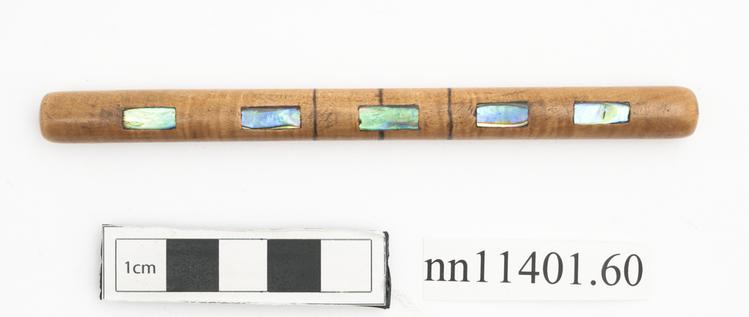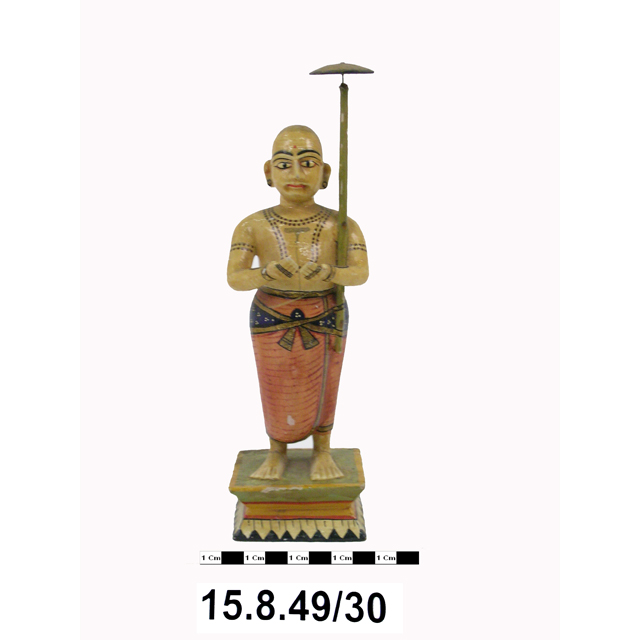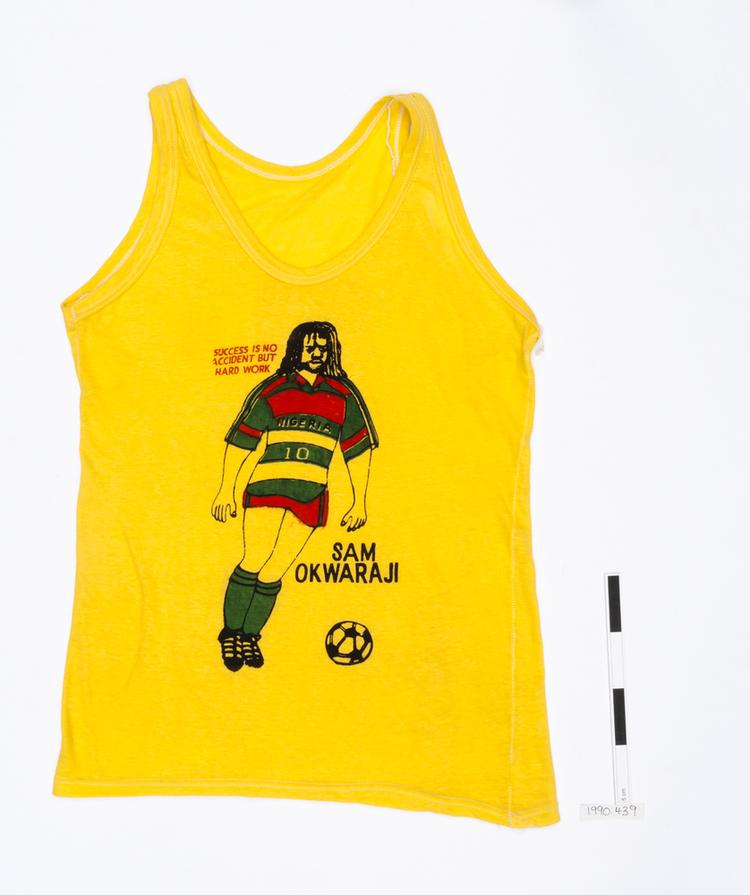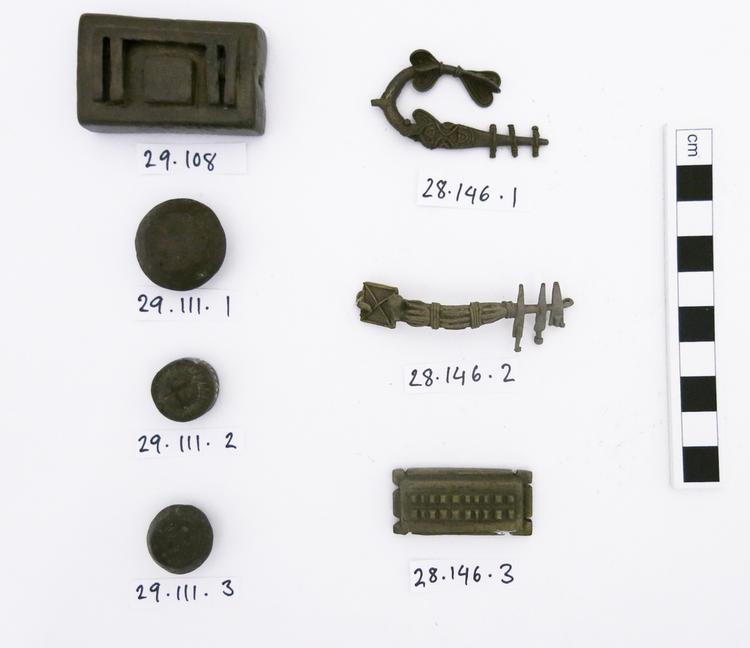Sierra Leonean helmet mask, associated with the female Sande or Bundu imitation societies, carved out of a light-weight wood with raffia fringing. She has a characteristic ridged neck, with a small mouth, and three scarification marks on each cheek. The downcast eyes also act as viewing holes for the wearer. An unusual representation of the British crown is depicted on her forehead. The hair is plaited and topped with three ridges, representing a common late 19th century hairstyle moulded with clay. Two figures sit at either side.
This helmet mask is part of the costume worn by the ndoli jowei in Mende, or a-Nowo in Temne; a masquerader associated with the exclusively female Sande (Mende) or Bondo (Temne) initiation societies. A central part of initiation involves the transition from childhood into womanhood, and thus initiates learn secret knowledge associated with adult life. The mask itself is thought to represent an ideal form of female beauty. The ringed neck, for example, is associated with being healthy and well-fed, whilst the down cast eyes and closed mouth represent both modesty and an ability to control emotion. Such masks are often adorned with iconography representing wealth and power. For example here we see a carved crown, associated with royalty, sat on the forehead.


































































































































































































































































































































































































































































































































